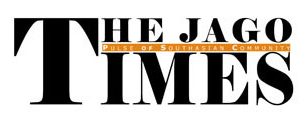Is the Meeting Between Trump and Asim Munir a Prelude to War? Preparations for an Attack on Iran or a Final Diplomatic Attempt?
By: Raja Zahid Akhtar Khanzada
Within the grand walls of the White House, when the representatives of two great powers sat face to face,
time itself seemed to pause for a moment.
Today’s silent meeting between President Donald Trump and Pakistan’s Field Marshal General Syed Asim Munir
may have lacked spoken words,
but it echoed loudly across the pages of history.
This was no ordinary diplomatic handshake, but a quiet whisper that turned into thunder over the clouds of the Middle East. When a region stands on the brink of war, and powerful hands come together, they do more than affirm relations they begin to reshape destinies.
Though the details remain undisclosed, silence has its own language. And in that language, today’s message was clear: this was not just a ceremonial encounter, but a calculated move on the global chessboard perhaps the beginning of a new world order quietly waiting to unfold.
Senior White House officials told NBC News on Tuesday that President Trump is considering a direct military strike on Iran. Following Israel’s sudden strike on June 13 targeting Iranian installations, the atmosphere of war in the region has rapidly intensified. Now, American leadership is consulting over the possibility of striking Iran’s underground Fordow nuclear plant with a 30,000-pound “bunker buster” bomb.
Fordow, located inside a mountain two hours from Tehran, is Iran’s most fortified and critical uranium enrichment facility. According to American military experts, only the GBU-57 Massive Ordnance Penetrator has the capability to destroy this facility, and this bomb is solely in the possession of the United States.
A senior official from the Trump administration told the American media:
“We are ready for a strike, but the President is still not fully convinced that this step is necessary.”
President Trump has made it clear that his top priority is the complete destruction of Iran’s nuclear program, but he also wants to assess whether such a strike would lead to a prolonged war or could be a limited, effective operation.
Trump has asked his close military advisors whether the Massive Ordnance Penetrator can indeed destroy such a deep and hardened mountainous facility like Fordow. Although the Pentagon has provided assurance, the President’s doubts persist.
According to available reports, Israel has already gained air superiority over Iranian skies and is considering multiple options, including ground commando operations. Israeli officials have made it clear that even if the United States does not carry out the strike, they are in a position to attack Fordow themselves—even if the results are limited.
How does a bunker buster bomb work?
Experts explain that a bunker buster bomb, with its massive weight and the force of gravity, penetrates through earth, rock, and concrete, and then explodes underground—either completely destroying the target or collapsing the surrounding structure.
Fordow’s depth is reported to range from 60 to 800 meters, due to which only a B-2 stealth bomber is capable of accurately striking the site with a heavy bomb like the MOP (Massive Ordnance Penetrator).
Although the White House has termed the meeting with Pakistan’s Field Marshal as a routine diplomatic engagement, the rapidly escalating threats in the Middle East, Iran’s counter-warnings, and Pakistan’s strategic importance in the region make it difficult to consider General Asim Munir’s presence as mere coincidence.
Pakistan has previously played a mediating role between China, Iran, Saudi Arabia, and the United States, and in the current scenario, that role could emerge once again. If the U.S. and Israel move toward war, then as a nuclear Muslim state, Pakistan’s position and narrative will gain critical importance.
In this context, Trump’s stance is clear:
“I have many options, and I make my decision at the last moment.”
Iran, too, has warned that if the U.S. attacks, the response will be such that “America will suffer irreversible damage.”
That moment, when in the quiet corridors of the White House,
two eyes gazed deep into the heart of history , one carrying the cunning of American statecraft,
the other, the silent wisdom of a Field Marshal. This was not merely a meeting between two figures,
but a convergence of two visions, two legacies, two futures.
At a time when the air of the Middle East is laced with the scent of gunpowder, and hearts beat anxiously from Tehran to Tel Aviv, this meeting felt like a flicker of light drawing a line of hope across a smoke-filled horizon.
As European foreign ministers gather in Geneva in search of diplomatic openings, Washington, too, has kept both the gate of war and the window of diplomacy ajar. If General Asim Munir’s meeting is, indeed, part of a quiet dialogue behind the scenes,
then this is no ordinary diplomatic encounter it could mark a new role, a new identity for Pakistan.
An identity not born from the shadow of the sword, but from the light of wisdom and the silence of strategy.
If the world stands at the brink of catastrophe, perhaps the truth spoken by a Field Marshal
may echo as a call for balance in an unsteady age. This is the time , when Pakistan must not remain a bystander,
but emerge as a voice that hears peace amidst the noise of war, and lights the torch of a new diplomatic foresight in a world on the edge of unraveling.



